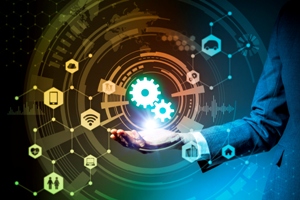As IoT adoption increases and the number of connected devices proliferates, writes Clare Grant, general manager at Red Hat Mobile, I believe it will become unsustainable for organisations to integrate point-to-point.
Application Programming Interfaces (APIs) can play a crucial role in application development in the intelligent digital mesh because they enable connected devices and AI apps to interact with data stored in enterprise back-end systems, in a more secure and repeatable manner. In this way, large enterprises can respond in a more agile way to change and disruption, such as damaged infrastructure, stock substitutions, route variations, price increases, or product improvements.
Managing multiple point-to-point communication
The opening up of APIs can also enable organisations to provide uniform interfaces to internal and external developers, partners and customers, to help improve data exchange and transactions. In addition, APIs enable the open source community to create new functionality and value.
At your service
Microservices, whereby application functionality is developed as independently deployable services, enable organisations to experiment with new features and more rapidly respond to changes and disruption.
Microservices architectures still require integration capabilities such as transformation, orchestration and connection, so that data can be shared across multiple systems and services. An agile integration approach, taking advantage of APIs, containers, and distributed integration technologies, can be used to bring integration into the application development processes.
Changes to client-side functionality require equal flexibility on the backend. Using an integration platform, developers can more quickly create and scale lightweight integration services, based on APIs. Business workflows rely on core systems of record and supporting IT infrastructure. In addition to AI and IoT datastreams, the Intelligent Digital Mesh will still require data from back-end systems to power apps and help deliver business value.
Enabled by containers
With an increasing number of different applications running in an enterprise, from the newer AI, mobile, and IoT applications to the more traditional business intelligence, web, and other industry-specific applications, the delivery and management complexity can quickly escalate. This is where the role of containers and a container-based platform can come into play.
By deploying microservices in containers, independent development teams can deliver them. Container technologies are designed to eliminate bottlenecks in performance and facilitate agile integration that underpins independent app development and scalability.
As AI and IoT combine and users become accustomed to an increasingly connected and data-driven environment, apps can become subject to continuous updates and unpredictable demands for elastic scalability, often independently from one another. Containers enable the continuous development of lightweight, tested units of app deployment that can scale independently on demand. Most importantly, containers enable consistent version management of system units and provide portability for existing apps so that they can be deployed in different environments without too much retooling.
Embrace the mesh
As with enterprise mobility, successful implementations are more likely to be strategic rather than tactical. Organisations should avoid working in silos and view AI, IoT, data analytics and mobile developments as part of the overall technology roadmap.

I expect the emergence of the intelligent digital mesh to help drive enterprises to adopt modern app development practices and enable them to bring applications to market faster. This can call for the adoption of DevOps practices, using flexible microservices architectures and APIs to support an agile approach, and containers to enable portability.
Conclusion
In the age of digital services, enterprise software should satisfy many new business objectives, incorporating transformative technologies including cloud, mobile, social, big data, IoT and AI, as a means of helping to improve business outcomes.
The ability to integrate data from multiple sources at speed is important for organisations that hope to benefit from IoT, big data and AI. Adopting an agile integration approach, using platforms that can manage and scale applications with independent development and delivery cycles, can help organisations to take full advantage of existing and emerging technologies.
CIOs can learn from existing successes within their own organisation, other industries, or the open source community to strategically focus resources, helping to make a clear business case for development and integration efforts, so that early successes can be more quickly scaled.
The author of this blog is Clare Grant, general manager at Red Hat Mobile
Comment on this article below or via Twitter: @IoTNow_OR @jcIoTnow










